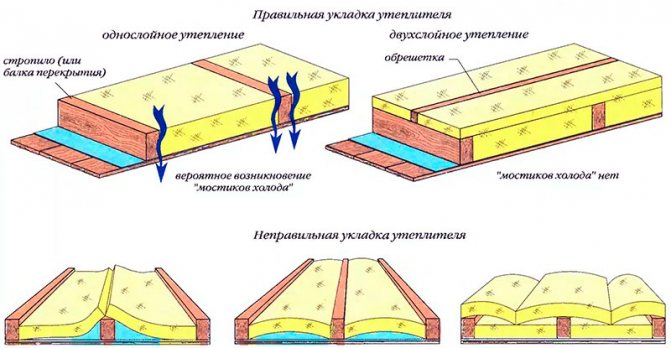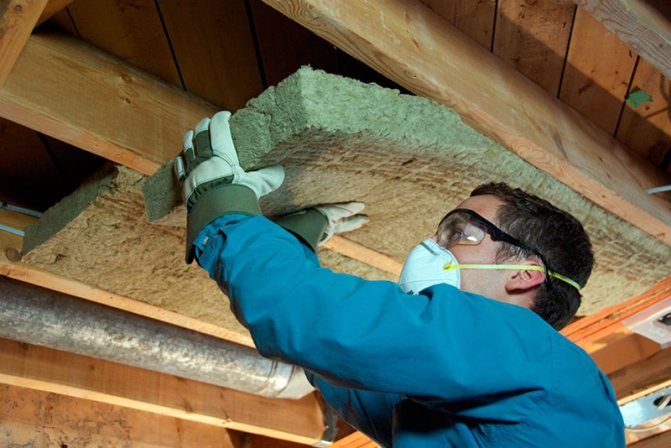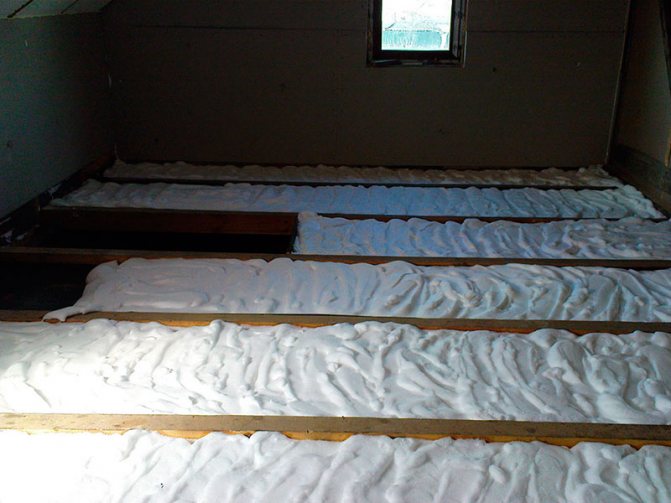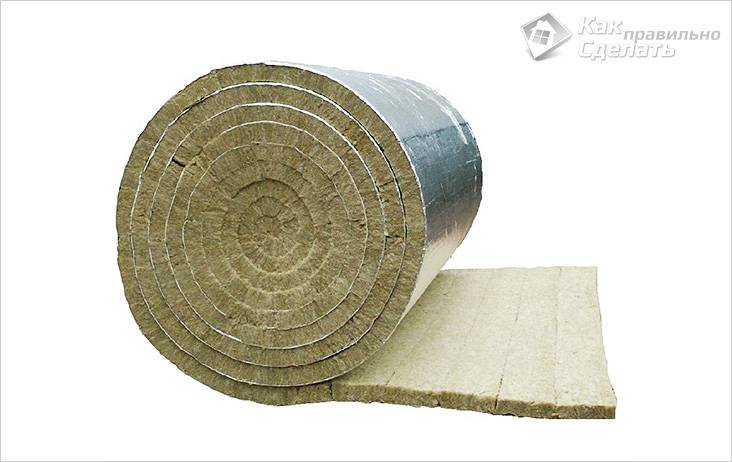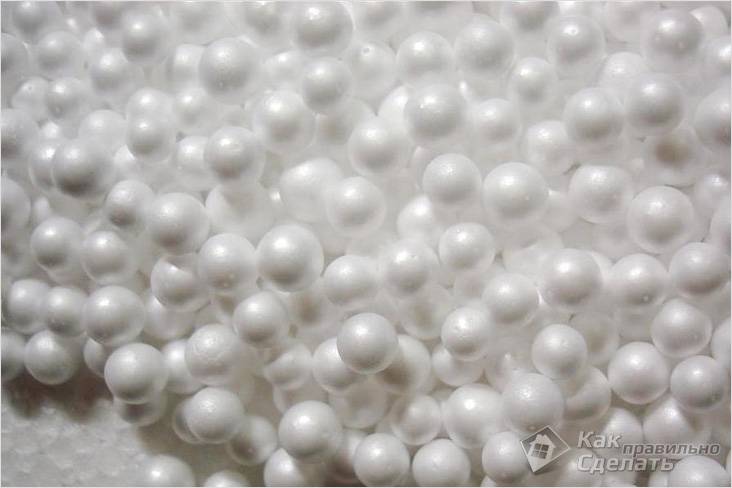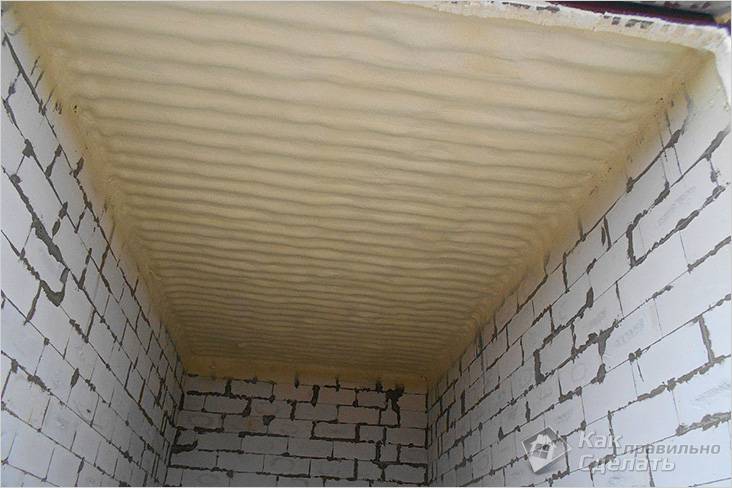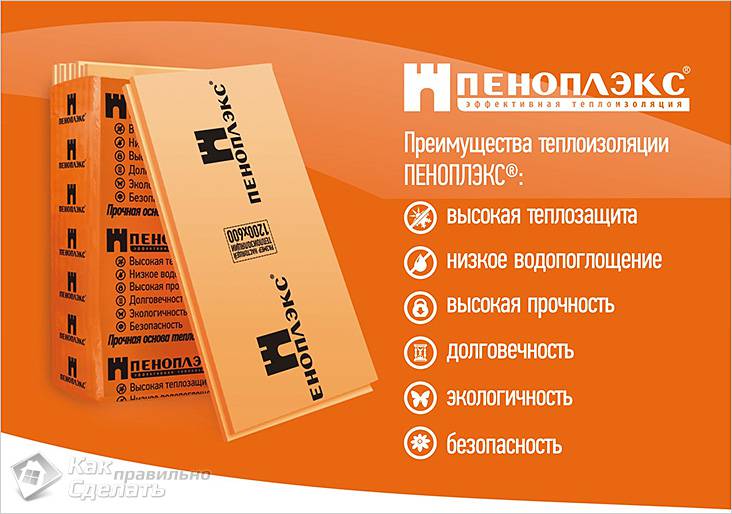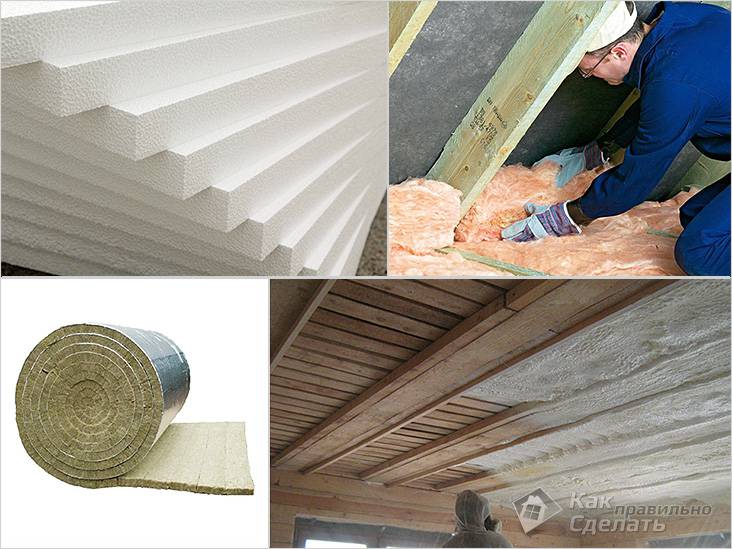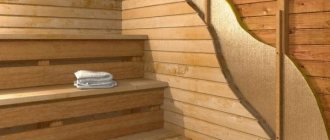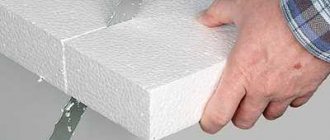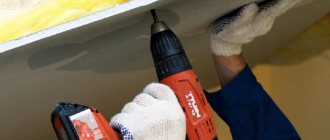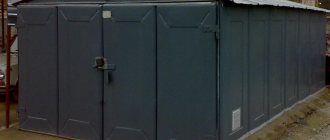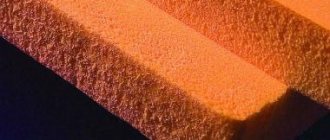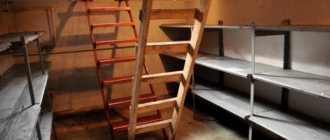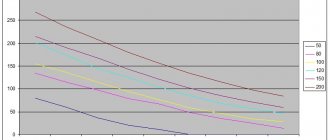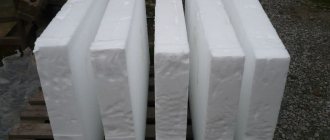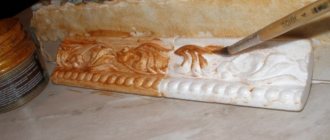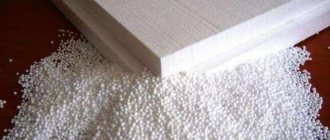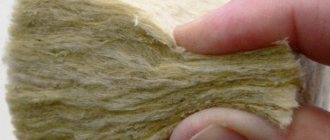What are the features of ceiling insulation in a garage?
Severe temperature differences inside and outside the room affect the safety of items in the garage. When such a phenomenon occurs, the accumulated condensation and a feeling of moisture become noticeable in those places where it is very difficult with thermal insulation. The metal parts of the car begin to age at an accelerated rate, and rust appears.
It is possible to save the situation and prevent unpleasant consequences with your own hands or with the help of specialists. For the comfortable existence of various objects and a vehicle, good ventilation and maintaining a certain temperature - up to + 5 ° C in the winter time inside the garage - are necessary.
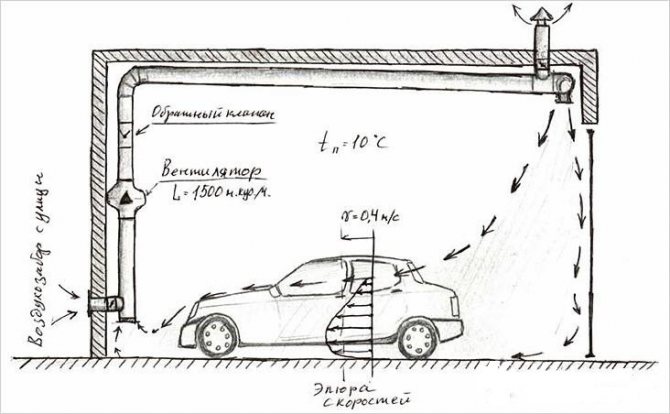
The need for ventilation when insulating a garage
It is not difficult to achieve optimal conditions and most men can do it. With minimal construction skills, you can insulate the ceiling. It is he who acts as a source of heat loss, therefore, this point should be given special attention.
When insulating a garage, it is worth noting that the main goal is to do all the work efficiently. A competent approach to business will exclude the subsequent appearance of corrosion due to condensation. Another plus of thermal insulation is saving money on heating the room.
Our work on this service
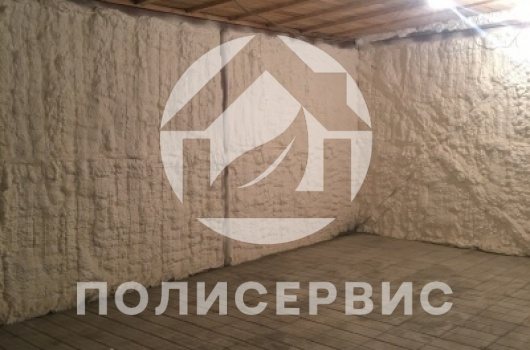

Thermal insulation of garage walls 125m2, Elektrougli
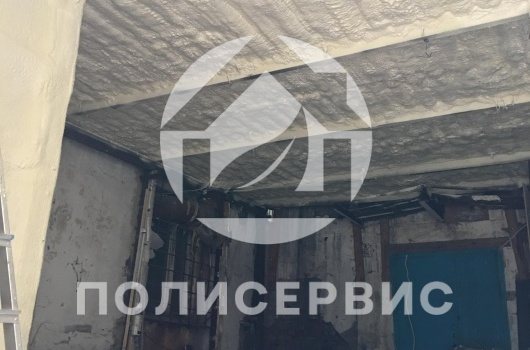

Insulation of the garage, 111m2, Medvedkovo, Moscow
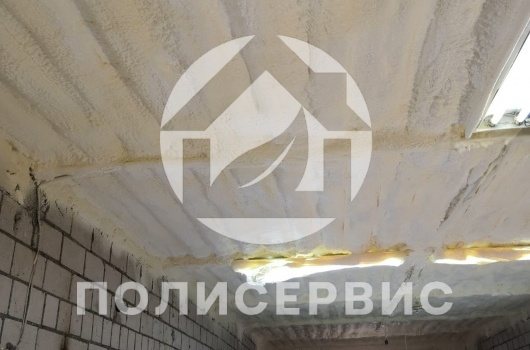

Insulation of the garage, 50m2, Moscow
What materials and tools are needed in the insulation process?
Before insulating the ceiling in the garage, it is worth planning what to do the work. Today, the choice of materials allows you to think about buying. The construction market offers a wide range of products. Entering the store, an inexperienced person in this matter will only be confused. Before buying it, it is important to plan the entire process of insulation to the smallest detail.
The main factor by which it is worth choosing this or that material is the climate of the region. Given the weather conditions in the northern regions, it is recommended to insulate the roof with dense and reliable building materials. In the central part and in the south, you can save money - make thinner insulation. In warm regions, it is not required as a heater, but as a moisture protector is necessary.
There are the following types of materials that are applicable in the thermal insulation of garages:
- mineral wool;
- polymer options (penoplex, polystyrene);
- fiberglass;
- foam-insulating, polyurethane foam and liquid heaters (astratek, corundum).
Installation of the presented types can be carried out independently. The stock of tools should be minimal - sharp knives are sufficient in most cases. All material is light in weight, it is easy to attach with the help of supporting structures.
Insulation from the inside
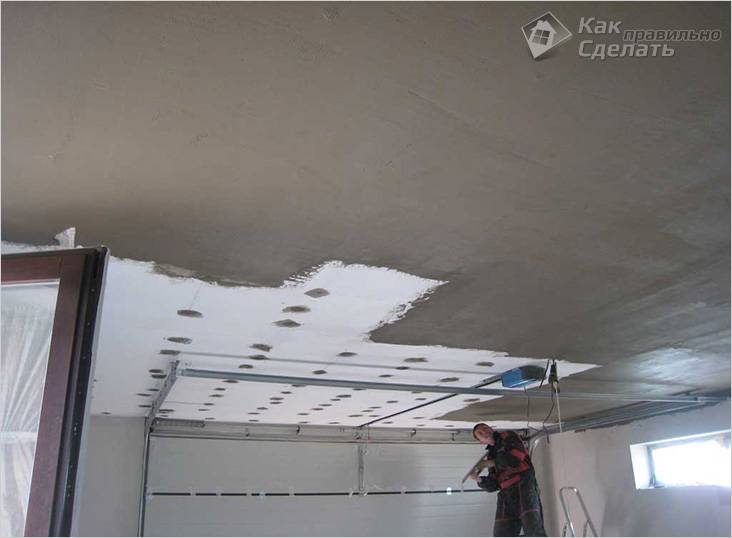

Internal insulation of the garage
Having chosen an inexpensive and moisture-resistant material for thermal insulation, you need to figure out how to insulate the ceiling. Depending on the material of the floor, the method of installation of the insulation is selected. Foam or extruded polystyrene foam slabs can be glued to a concrete ceiling without prior preparation. Since the foam is a combustible material, for safety it is better to use plates with the PSB-S marking, which have fire retardants in the composition.
A special adhesive is applied with a comb on the surface of the insulation, then the plates are pressed against the ceiling and held for some time. The connecting seams are sealed with the same compound. For additional fixation of the material, plastic dowels-umbrellas with a wide head are used. Each slab is fixed with 5 dowels: 4 at the edges and 1 one in the center.Rigid plates of extruded polystyrene foam do not require a large amount of fasteners, 2 dowels are enough. The finishing finish for the insulation is plastering. Before applying the mortar, the surface is reinforced with a fiberglass reinforcing mesh, which is attached to the adhesive.
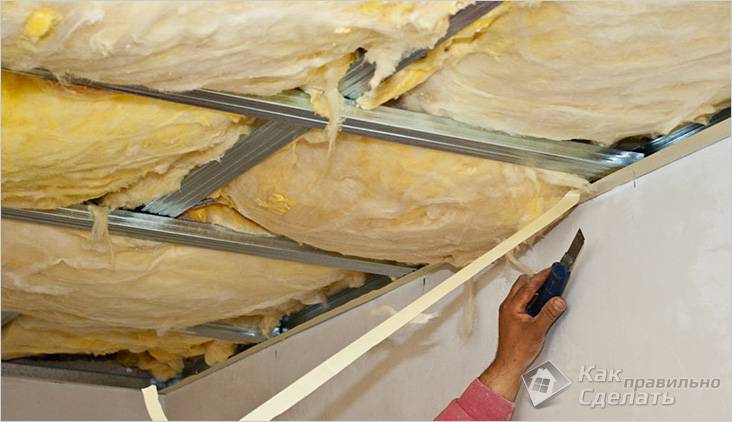

Mineral wool finishing
The second method of installing insulation is more costly and time consuming. It requires the assembly of a frame from a galvanized profile. The UD profile is used for the guides, and the CD wall profile for the lintels. Thermal insulation includes several stages:
- The marking of the ceiling is carried out for the fastening of the profile.
- Holes for fasteners are drilled in the guides, then the profile is fixed on the ceiling with self-tapping screws.
- The foam is placed in the space between the profiles, from below it is supported by a jumper from the CD profile, attached to the main one with self-tapping screws. This sequence is maintained until the end of the installation of the insulation.
- Finishing is done with plastic panels that are hemmed to the profile.
The first method of insulation is preferable, it is not only simpler, but also provides better thermal insulation without breaking the integrity of the ceiling by drilling.
When using mineral wool in the internal insulation, waterproofing of the ceiling is imperative. If the material is allowed to get wet due to moisture seeping from the roof, then it will lose its properties as a heat insulator.
The surface of the mineral wool laid in the frame is always covered with a vapor barrier membrane, it allows moisture accumulated in the insulation to escape. The canvas is attached to the profiles with double-sided tape or with staples with a step of 15 cm. Penoflex does an excellent job with the role of vapor barrier, while it is an additional layer of insulation. The material is easily attached to the crate with staples, the joints of the canvases are glued with foil tape.
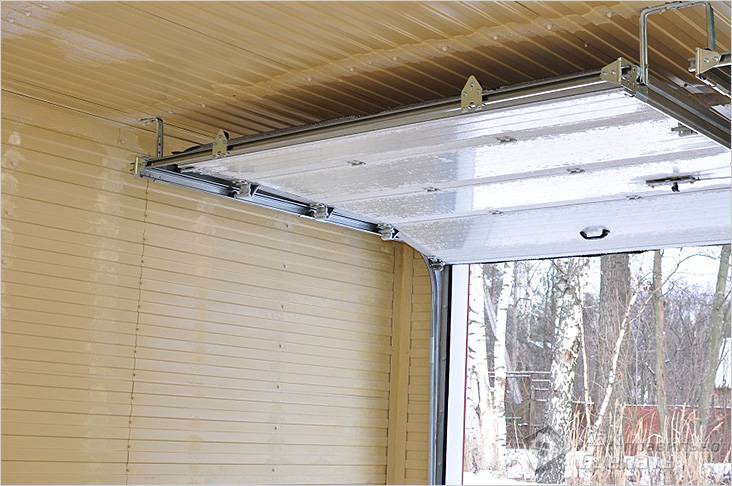

Profiled sheet finishing
Recently, many people prefer to trim the ceiling with a profiled sheet.
Finishing with plastic panels is the most common option; this material is resistant to temperature fluctuations, moisture, and is easy to clean when dirty. For a heated garage, you can use drywall or clapboard.
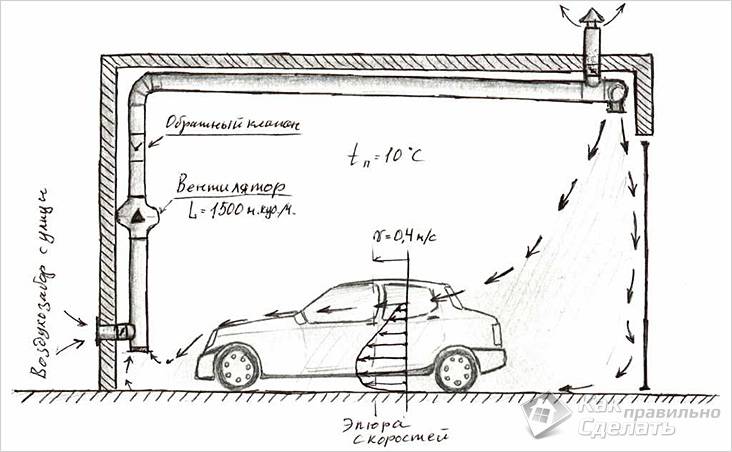

Garage ventilation
When performing thermal insulation, you cannot turn the garage into a thermos, you need to take care of the ventilation system or leave ventilation holes. This will create a favorable climate without excessive moisture hazardous to the metal of the car.
Mineral wool
The process of making the material is the melting of rocks. The resulting composition is used for insulation of premises. In the assortment of stores you can find mineral wool with a layer of foil with increased thermal insulation properties. The material does an excellent job of conserving heating resources, thereby saving the garage owner's money.
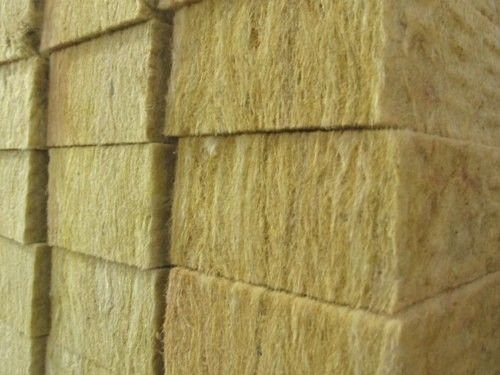

Mineral wool
Suitable only for waterproofed ceilings. The material itself is not resistant to moisture. It has a number of advantages - fire resistance, environmentally friendly and chemical resistance. One of the budget options for thermal insulation of the roof in the garage.
Basic requirements for garage insulation
When insulating a storage space for a car, it is worth remembering a number of key points.
- Ventilation openings must not be repaired - any heat-insulated structure needs ventilation as well as a heated one.
- Heat protection should affect not only walls, but also garage doors, floors, and roofs.
- If you want to do everything according to the rules, it will be useful to study the sixth section of SNiP 2.07.01–89. It regulates the requirements for the premises where vehicles are stored. Of course, when it comes to your personal garage, you don't have to adhere to them. However, standards can help address a number of issues.
- To insulate the gate, in most cases, an internal thermal protection is installed.
Polymer materials
Polyfoam is characterized by resistance to moisture. Estimating the cost of other materials, it is worth noting its cheapness. Its serious drawback is fire hazard. Sometimes the material is gnawed by mice. Usually, insulation of any ceiling in a garage with polystyrene foam is not difficult.
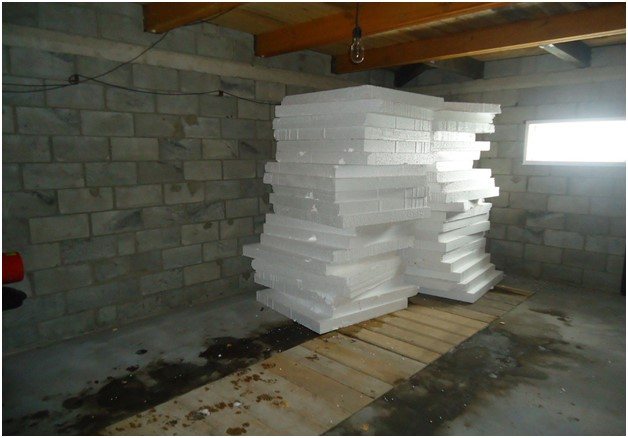

Styrofoam as insulation for the ceiling in the garage
Penoplex is similar to polystyrene, but is manufactured using an improved system. Rectangular sheets with beveled edges. Docking and laying is as easy as styrofoam. The insulation method is distinguished by the attachment of one piece of foam to another. Sheets come in various thicknesses from 1 to 10 cm.
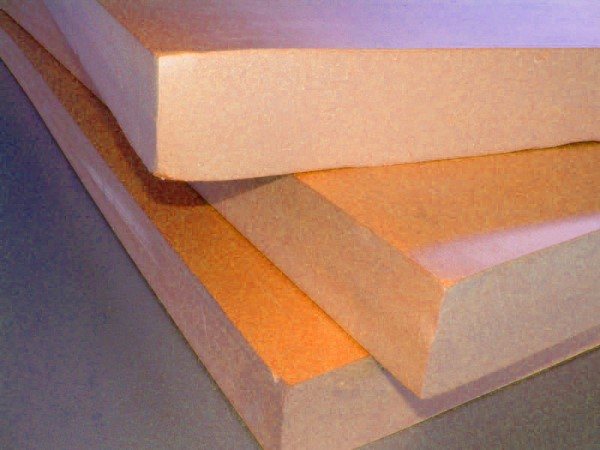

Penoplex
Fiberglass
Broken glass is the basis of the composition of the material. One of the important benefits is affordability. The material is whimsical about the water and humidity in the room. It has a detrimental effect on the fibers, gradually destroying their structure. Easily ignites.
The material is not easy to handle. Requires a waterproofing layer and, if possible, the installation of a fire barrier. Installation requires some protection - preventing glass wool dust from entering the respiratory tract and eyes.
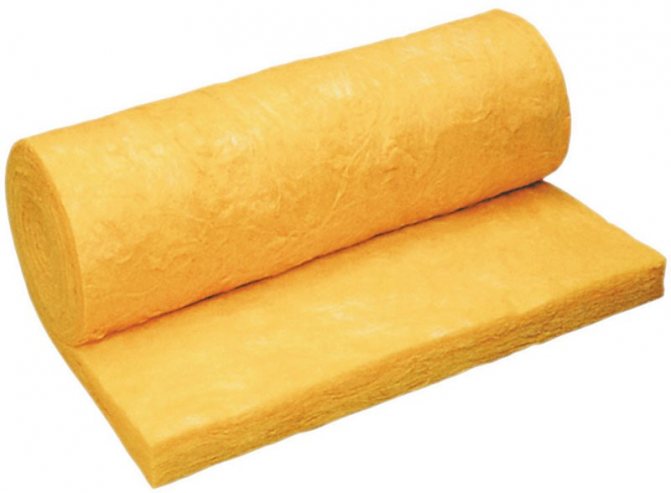

Glass wool
Modern materials - penoizol, polyurethane foam and liquid insulation
New materials have already managed to establish themselves in the construction services market. They represent the spraying of a foam composition onto an indoor surface. Their popularity is due to a number of advantages among classic materials for thermal insulation:
- no deformation;
- long service life - up to 40 years;
- versatility - suitable for both the ceiling and walls;
- resistance to moisture, an obstacle to the development of an unfavorable microenvironment;
- porosity allows breathing.
You shouldn't even think about how you can insulate the ceiling in the garage with foam. Do it yourself and inexpensively - this expression does not fit these materials. Each of the material options requires special application skills. The mixture is in special containers. Experts in this field will cope with the task best of all. They will do everything right and according to technology.
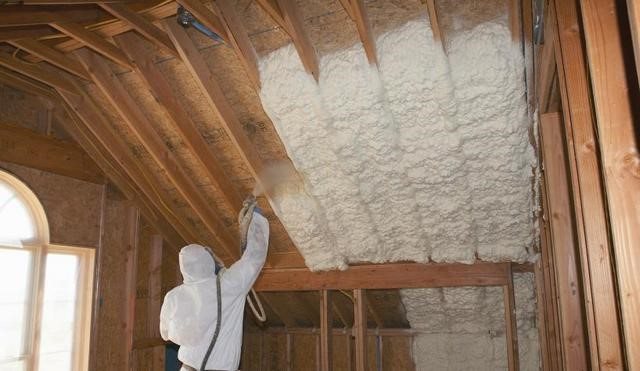

Polyurethane foam
What materials are used for cladding
After the ceiling is insulated, the surface is finished using various materials. With traditional cladding, the following are used:
- Plaster. Most often they use plaster mixes, which not only level the surface, but also additionally protect it from high humidity. Also, when plastering, a finishing putty is used, which can be painted in the future..
- Wood. Some people prefer wood, which will make the garage space cozier. For finishing, sheathing boards, wood paneling and beams are used. The main advantages of such materials are considered their aesthetics, thermal insulation and environmental friendliness.
- PVC. Another common facing material is PVC panels. Their advantage is the simplicity and speed of installation. Even a person who has never been involved in repair and construction work will be able to sheathe the ceiling with such panels.
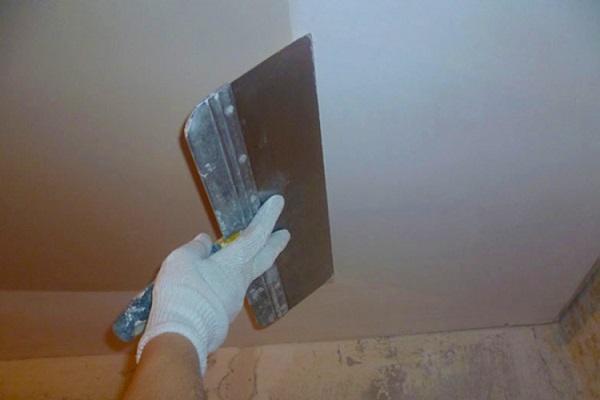

How to insulate a garage roof with your own hands?
Not all garage owners have the ability to insulate the outside. For this to be real, there must be an attic on the roof. Most motorists do not have such premises for a car, so it is worthwhile to dwell in more detail on thermal insulation from the inside. To cope with the task on their own using classic materials and a minimum set of tools, everyone can do it.
Installation with polystyrene and polystyrene foam
It is possible to insulate the ceiling from the inside directly onto concrete using polymers. This method of insulation is also applicable for metal floors, but using a slightly different technology.
The metal roof is insulated from the inside according to the following algorithm:
- The first thing to do is attach a wooden or metal profile to the roof.
- Next, stock up on an adhesive suitable for ceramic tiles, for example, the Ceresit brand.
- A notched trowel will work from the tools.
- Apply the diluted solution to foam sheets (1m * 1m) or to penoplex. Glue to the ceiling.
- Remove the formed seams using the same tile adhesive.
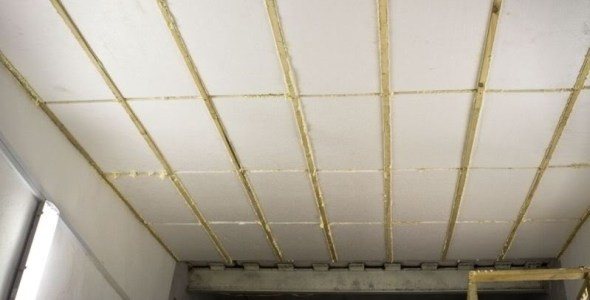

Styrofoam laying
The insulation scheme for a concrete pavement is similar. Only for this option, the construction of a wooden or metal lathing should be excluded. All cracks and joints are sealed with polyurethane foam.
After going through all the stages of the procedures, you get a decent ceiling. You can leave everything as it turned out - without beauties. Some will prefer to close the insulation by adding another layer of finishing material.
Glass wool installation
The most important thing in working with fiberglass is to observe safety precautions. You need to act carefully. It is necessary to protect eyes and respiratory organs from material dust. When preparing for installation, it is worth stocking up with plastic wrap and a sharp knife / scissors.
After going through the preparation stages, you can get down to business:
- The erection of the lathing - can be made of wood or metal, the first material will require mandatory antiseptic impregnation. The thickness of the beams should be equal to the layer of insulation. The structure is fastened with self-tapping screws, leaving a small gap from the edge of the ceiling and to the roof.
- It is necessary to create a layer of waterproofing - by laying the membrane with an overlap of about 10 cm and securing it with mounting tape. The sheets are fixed with a stapler. The membrane will save the entire contents of the garage from leaks. Omitting this step may indicate vain labor on insulation, the material will lose its properties from possible moisture.
- Next, the installation of the material begins - the work is done on polyethylene, where cotton wool is unfolded and laid out;
- The necessary pieces are cut, equal to the space between wooden or metal beams;
- Stacked in one layer, for the northern regions - in two layers;
- At the end of work with the base material, a vapor barrier layer is required. A cover film can be an excellent option. Large pieces of material are spread over the entire area of the ceiling with an overlap, fastened to a stapler or double-sided tape (stuck to the crate).
- it is necessary to complete the insulation with finishing; sheets of drywall may be appropriate here.
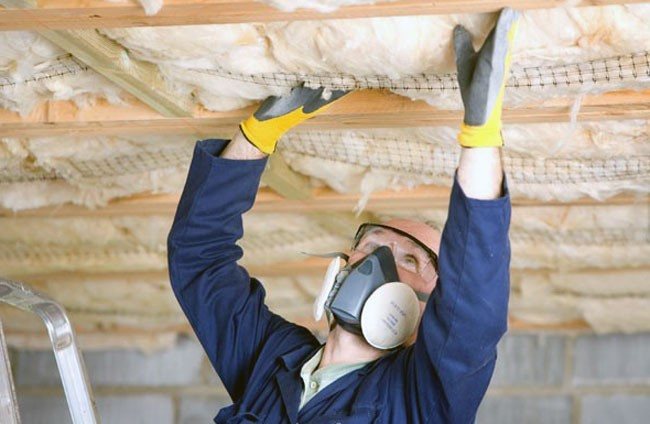

Laying glass wool
Installation of mineral wool
Mineral wool is laid in a similar pattern to fiberglass. The material is fastened with the help of nails and wire according to the scheme - nails are nailed into the beams at a distance of 40 cm, then a wire is pulled over them, imitating a mesh. As in the previous case, the material needs vapor barrier, one must not forget about the film flooring, otherwise the cotton wool will lose its declared heat preservation properties.
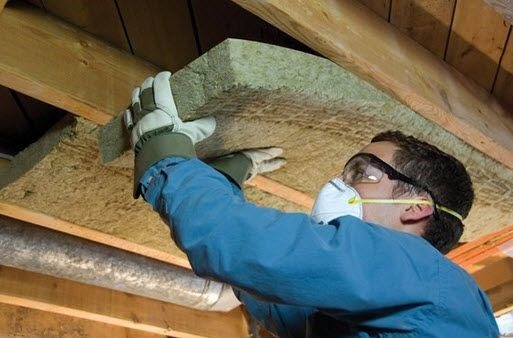

Laying mineral wool
The choice of thermal insulation material
When choosing insulation for garage doors, you need to take into account all the conditions for its operation. Any structures can be insulated both outside and inside. External insulation is preferred. This is due to the "dew point", which in the first case will be located in the insulation, and in the second - between it and the metal sheet. However, external insulation is not always possible to perform technically, so you often have to be content with little.
The material used for thermal insulation of garage doors must have the following characteristics:
- low thermal conductivity;
- moisture resistance;
- incombustibility;
- light weight;
- convenient installation;
- moderate cost;
- durability.
These properties are inherent in the following materials:
- foam;
- minwate;
- polyurethane foam;
- extruded polystyrene.
Polyfoam is characterized by increased moisture resistance, however, it is quite easily flammable, and when it burns, toxic substances are formed. At the same time, with mineral wool, the opposite is true - at high humidity, its thermal conductivity increases, but fire safety is at a high level.
Polyurethane foam is not afraid of moisture, does not burn and is lightweight, and during installation it forms a continuous coating. Its only drawback is its high cost, so this type of insulation will not be affordable for everyone. The best option is extruded polystyrene, which is devoid of all the disadvantages of previous materials. Therefore, we will consider the technology of insulating garage doors with extruded polystyrene.
The final stage
Insulation with polyurethane materials is usually completed with plastering and painting. Initially, the reinforcing mesh is fixed. After that, the selected composition is applied and the surface is covered with color. Wadded materials are covered with sheets of moisture-resistant drywall, pvc panels or corrugated board on the created crate.
How best to insulate the ceiling in the garage will have to be decided independently, based on a number of factors. First, you need to decide who will do this and what the limit of funds will be. If there is enough money for any services of craftsmen, then it is better to stop at liquid heaters. When planning to do everything with your own hands, it is worth additionally assessing the climate conditions and the safety of materials, and only then buy everything you need.
Technical parameters of materials for insulation
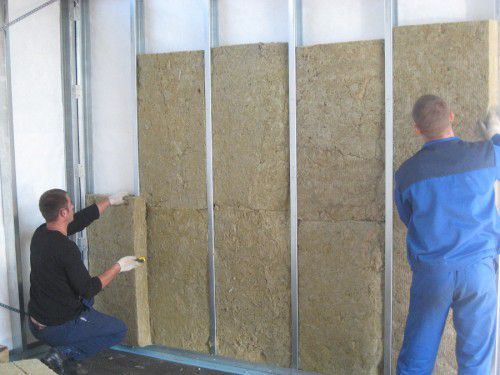

Stone wool is the most effective material for insulating metal surfaces
Before insulating the garage using available methods, you will need to choose materials suitable for these purposes. First of all, thermal conductivity is taken into account, which provides effective insulation of metal walls. The undisputed leader here is expanded polystyrene with a working indicator of 0.038 conventional units. Behind it are the following well-known insulation materials:
- mineral and glass wool (0.038 and 0.043 - respectively;
- expanded clay (0.171);
- foam concrete (0.28).
- ceramic brick (0.519);
- cinder blocks - 0.64.
A layer of expanded polystyrene with a thickness of 5 cm is equivalent to insulation from a meter-long cinder block covering.
Another important characteristic of the material chosen for insulating a garage is thermal inertia. This indicator takes into account the rate of temperature change on the surface of the protective coating. Here, the opposite is true - the wall of cinder blocks has a large inertia (heats up and cools down longer). Thus, the correct approach to garage insulation is to choose a material due to which the thermal inertia of the protection increases and its thermal conductivity decreases.
Since such a heat insulator simply does not exist in nature, a combined approach has been invented, which allows not to let the cold into the interior spaces in winter, and to protect them from the heat in summer. For these purposes, modern technologies are used, involving the use of classic heaters in combination with reflective heat insulators. This approach is easy to implement if the garage is attached to the house, otherwise it is not as effective.
But even in an attached garage, wall insulation will be of little use if you do not worry about thermal insulation of the floor, roof and gate.
Insulation of garage doors
Insulation of garage doors will eliminate heat loss through metal doors, prevent the surface from freezing in severe frosts and excessive heating in hot weather. Thanks to this work, you will be able to maintain a certain microclimate in the room.
Instructions for self-warming the floor in an unheated garage
The cheapest way to insulate a floor in a garage is to make a claydite pillow and fill it with concrete.... True, in this case, the finished base will have to be completely disassembled, and the whole process will be time consuming.
Work order:
- Dig a foundation pit up to half a meter deep in the ground and cover it with roofing material, going up the walls. Seal the waterproofing seams with bituminous mastic or simply solder them.
- Fill the hole with expanded clay to a height of 30 cm and cover it with a reinforcing mesh.
- Prepare a concrete solution and pour the screed of the required thickness. Try to make the base with a slope towards the gate to drain water.
Do not forget that when installing a concrete floor around the perimeter, it is necessary to leave expansion joints. For this, use a special PET foam damper tape.
Insulation for cement filling can also be performed using foam. It is not necessary to fasten it - it is enough to lay the sheets tightly on a leveled surface, covered with a film, and foam the seams. Perform waterproofing on top again, lay reinforcement and pour concrete solution.
Under the cement screed, sheets with a density of at least 25 kg / m3 are needed
Thermal insulation of a floor in a garage with a cellar
When it comes to a garage with a cellar underneath, floor insulation has to be done especially carefully. Much depends on the design of the floor. It is ideal if it is made of wood - the fight against excess moisture in the basement does not give a 100% result, and the massif, unlike concrete, not only accumulates moisture, but also willingly gives it away.
The scheme of the insulated floor will look like this:
- A waterproof insulation laid between the logs - the lightest foam is suitable, since there will be no load on it.
- Diffusion membrane with one-way permeability, so that the wooden beam can "breathe" through it. At the same time, 10-15 cm lag at the ends remains free.
- Extension crate 5 cm high - provides a ventilated gap above the insulation layer.
- Sub-floor made of edged boards.
For a garage with a basement - the best option
Detailed material specifications and a step-by-step installation guide
In this block, we will describe all the pros and cons of the recommended materials, and also tell you what you need to buy additionally and how to insulate the garage ceiling without involving professionals.
Styrofoam
Insulating the ceiling with foam is a nice thing, and besides, it's a penny.
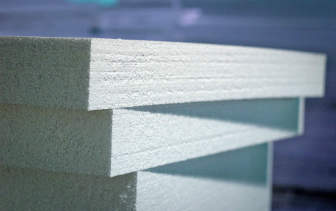

To implement this idea, you do not need anything other than sheets of foam and special glue to which you will attach it.
No other materials are needed. The only thing is that you can visually improve the look of the ceiling by sheathing it on top with plastic or plastering. But, this is if the appearance of the room is important to you.
If you leave the foam without finishing, nothing bad will happen to it. Indoors, it does not deteriorate for a very long time and will serve you faithfully for at least 15 years, or even more.
There is an opinion that ordinary polystyrene is too fire hazardous, therefore, it is better to take polystyrene foam, since it does not burn.
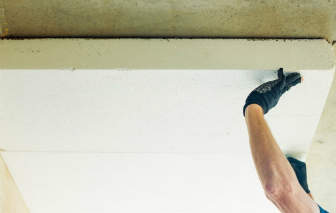

In fact, both are on fire. The only thing is that the penoplex both ignites and fades out, as it is impregnated with a special fire-fighting component - a fire retardant, which promotes self-extinguishing.
But, by and large, a fire in a garage is a very common thing, and if you do not have a mini-service station there, in which constant work is carried out with a power tool, then there is no particular reason to be afraid of a fire.
True, if your garage is heated, moreover, with electricity, then it's better to play it safe: what if someday you forget to turn off the heater and there is a fire? And, if there are no such prerequisites, then feel free to buy polystyrene and for the cause!
Where to start insulation of the ceiling with foam?
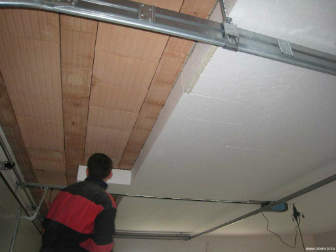

First of all, you need to clean the surface of the ceiling and for better adhesion with the glue, go over it with a primer mixture.
This is necessary in order to remove the finest dust from the ceiling, which will interfere with a good adhesion.
What to do next?
Then you buy the styrofoam. We do not recommend saving on thickness, since the future room temperature depends on this. Of course, even thin sheets will protect the concrete ceiling from moisture, but if you really do, then do it well and think that cold is just as undesirable as moisture.
The best option is a sheet thickness of 10 cm, since 5-6 will not be enough.
Buy a special tile adhesive and a notched trowel with the Styrofoam sheets.
Then just dilute the mixture, apply it to the sheets and paste over the ceiling! You don't need to do anything else.
Mineral wool
The use of mineral wool justifies itself only if, for example, you have it left after building a house. In this case, you can apply it so that the good does not disappear.
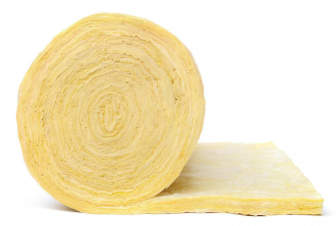

For the rest, it has no particular advantages for insulating the garage. Its thermal conductivity is much worse than that of polystyrene, it costs more and there will be more fuss with its installation.
In addition to mineral wool, you will need wooden beams or aluminum profiles, with the help of which you will build a mesh in the cells of which you will place the mineral wool.
Then, you need a vapor barrier film, then a finishing material, since bare cotton wool looks much worse than foam sheets.
That is, for work you will need:
- Mineral wool
- Waterproof film
- Wooden beams
- Drill
- Stapler for attaching the film to the timber
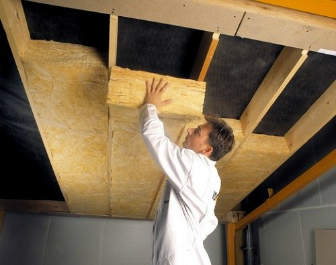

So, as you can see, this option is completely incomparable in terms of labor costs and cash costs with the first.
Moreover, we repeat, even the thickest layer of mineral wool will not provide the heat that foam will give.
So, what step-by-step actions you need to perform if you stopped at this option:
- 1. Buy mineral wool, timber, dowels, film.
- 2. Find a tool: a puncher and a construction stapler.
- 3. From a bar, make a ceiling lathing along the perimeter, to which you nail a vapor barrier film
- 4. Then, in the middle, make a "lattice" of beams, the cells of which will be the same size as the sheets of mineral wool, but smaller by a few mm so that it does not fall out.
- 5. For greater beauty, you can decorate the ceiling with plastic panels or any other material to your liking and wallet.
Glass wool
Glass wool, in contrast to mineral wool, is significantly cheaper. It is necessary to work with it extremely carefully, since it is made of the smallest glass chips that crumble.
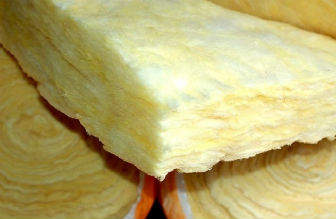

Moreover, it is necessary to take care not only of the hands, but also of the eyes, mouth, nose, since it is quite simple to damage the mucous membranes. A regular breath without a mask can turn out to be very sad.
To work, you need the same set of tools as in the case of mineral wool. Materials are also needed for the construction of the rafter system (cells), waterproof film, dowels, drill and stapler.
The only thing: in this case, it is allowed to put a layer of film on top of the insulation, that is, to nail it onto the grate after the glass wool is laid.
For the rest, we also insulate, as described in the block above.
Expanded polystyrene
Expanded polystyrene, aka penoplex, is the same as polystyrene, roughly speaking. But, as we wrote above, it has a good property - self-extinguishing in the event of a fire.
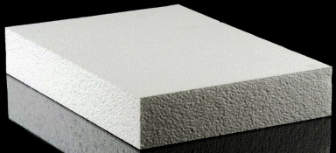

Honestly, it is for the ceiling that this is a very dubious advantage, since if trouble already happens, the car will flare up faster than the fire reaches the ceiling. But let's not talk about sad things.
In addition to comparative fire safety, expanded polystyrene has another good property - durability. If ordinary foam begins to crumble in 15 years, then this material will stand for all 30 and no special changes will happen to it.
The sheets of expanded polystyrene are fixed in the same way as the expanded plastic: with glue. If you want, you can put it in the same way as mineral wool on the crate. This makes sense if you intend to then sheathe the ceiling with something decorative.
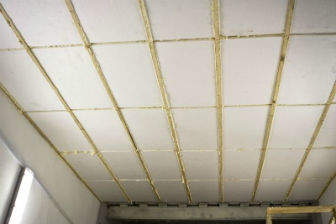

For example, clapboard or plastic panels. Yes, even drywall! Anyway, you will need some kind of base for these materials, so it makes sense to make the "mesh" right away.
If you do not want any decorations, then the sheets can be left as they are. It is not necessary to cover them with a film, this material is not afraid of moisture.
What about thermal insulation properties? Penoplex keeps heat better than polystyrene foam. A 5-centimeter-thick foam sheet will provide the same effect as a 10-centimeter, regular foam sheet.
Penoizol
This is already a novelty on the market, few people know about penoizol. This material is wonderful in every sense.
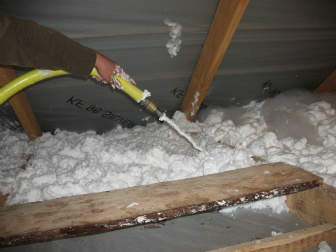

It is durable and will retain all its properties for 40 years, then, it is completely waterproof, but at the same time breathes. And this means that penoizol does not care about any fungus, even if you do not visit the garage for a long time and ventilate it.
Then, this is a very warm material and does not form joints when applied (because it is applied in the form of liquid foam, which hardens within 2 hours). Roughly speaking, this is an analogue of conventional construction foam, but only in large volumes and with improved thermal insulation properties.
Buying penoizol is not a problem. But to apply it exactly - you need skill. Therefore, if you are not sure that you can cope on your own, then it is better to entrust this to specialists.
But, before they arrive, you need to prepare the surface in the same way as before gluing the foam: clean the ceiling and apply a layer of primer.
The penoizol ceiling in the garage is also good because it looks much better than uncovered sheets of foam or expanded polystyrene.

